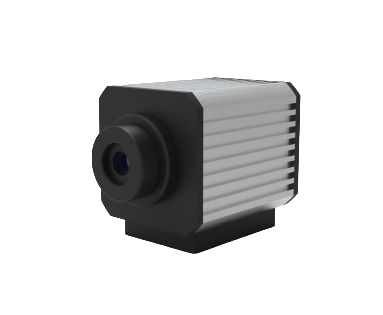Introduction:
Thermal imaging cameras have become invaluable tools across various applications due to their unique ability to capture infrared radiation and convert it into visible images. Whether in industrial maintenance, home inspections, firefighting, or other fields, understanding how to choose the right thermal imaging camera is crucial. This guide will provide expert guidance on selecting the most suitable thermal imaging camera for your specific needs. Let’s begin by exploring what makes thermal imaging cameras useful.
Understanding the Basics:
Before delving into the selection process, it’s essential to grasp the fundamental principles of thermal imaging technology. Their ability to detect and visualize temperature differences makes thermal imaging cameras useful, making them exceptionally versatile for various applications.
These cameras work on the principle that all objects emit infrared radiation directly related to their temperature. What makes thermal imaging cameras useful is their capability to capture this radiation and create images, known as thermograms, that display temperature variations across the scene. This ability to “see” heat variations sets thermal cameras apart from traditional ones. It is at the core of their utility.
Identifying Your Purpose:
You must first identify your specific purpose or application to choose the right thermal imaging camera. What makes thermal imaging cameras useful varies depending on their intended use. Common applications include:
- Industrial Maintenance: Thermal cameras excel in detecting overheating electrical components, identifying insulation issues, and spotting machinery malfunctions before they lead to costly breakdowns.
- Home Inspections: In home inspections, these cameras reveal hidden problems such as water leaks, insulation gaps, and electrical hotspots, allowing for more thorough assessments.
- Firefighting: Firefighters rely on thermal imaging cameras to locate victims in smoke-filled environments, detect hidden fires, and improve their safety during rescue operations.
Factors to Consider:
Now that you understand the basics and have defined your purpose, it’s time to delve into the factors that make thermal imaging cameras useful for your needs. There are three key factors to consider:
- Resolution: The resolution of a thermal camera determines its ability to provide detailed images. Higher-resolution cameras offer finer detail, which can be crucial in many applications. Consider the resolution that suits your requirements.
- Temperature Range: What makes thermal imaging cameras useful is their ability to detect a wide range of temperatures. Depending on your application, you’ll need a camera with an appropriate temperature range. For instance, industrial applications may require a broader range to capture extreme temperatures.
- Budget: Budget considerations are essential when choosing a thermal imaging camera. These cameras come in various price points, so balancing your budget and the features you need is crucial.
Camera Features and Specifications:
What makes thermal imaging cameras useful extends beyond resolution and temperature range. It includes various features and specifications that enhance their functionality. Consider factors such as refresh rate, thermal sensitivity, and any specialized features relevant to your application.
Brand and Model Comparison:
Comparing different brands and models is crucial in finding the right thermal imaging camera. Each brand may offer unique advantages, and specific models may cater better to certain applications. Look for reviews and user feedback to gain insights into real-world performance.
User Reviews and Recommendations:
When deciding, reading user reviews and seeking recommendations from professionals in your field is invaluable. They can provide practical insights into what makes thermal imaging cameras useful for specific applications.
Making Your Decision:
In conclusion, choosing the right thermal imaging camera requires thoughtful consideration of factors like resolution, temperature range, and budget. Remember that their adaptability to various applications makes thermal imaging cameras useful. Still, the ideal camera for you will depend on your specific needs.
Conclusion:
What makes thermal imaging cameras useful is their ability to reveal hidden details and temperature differences in a way that traditional cameras cannot. By understanding your purpose, considering essential factors, and comparing brands and models, you can confidently select the ideal thermal imaging camera to meet your needs.



